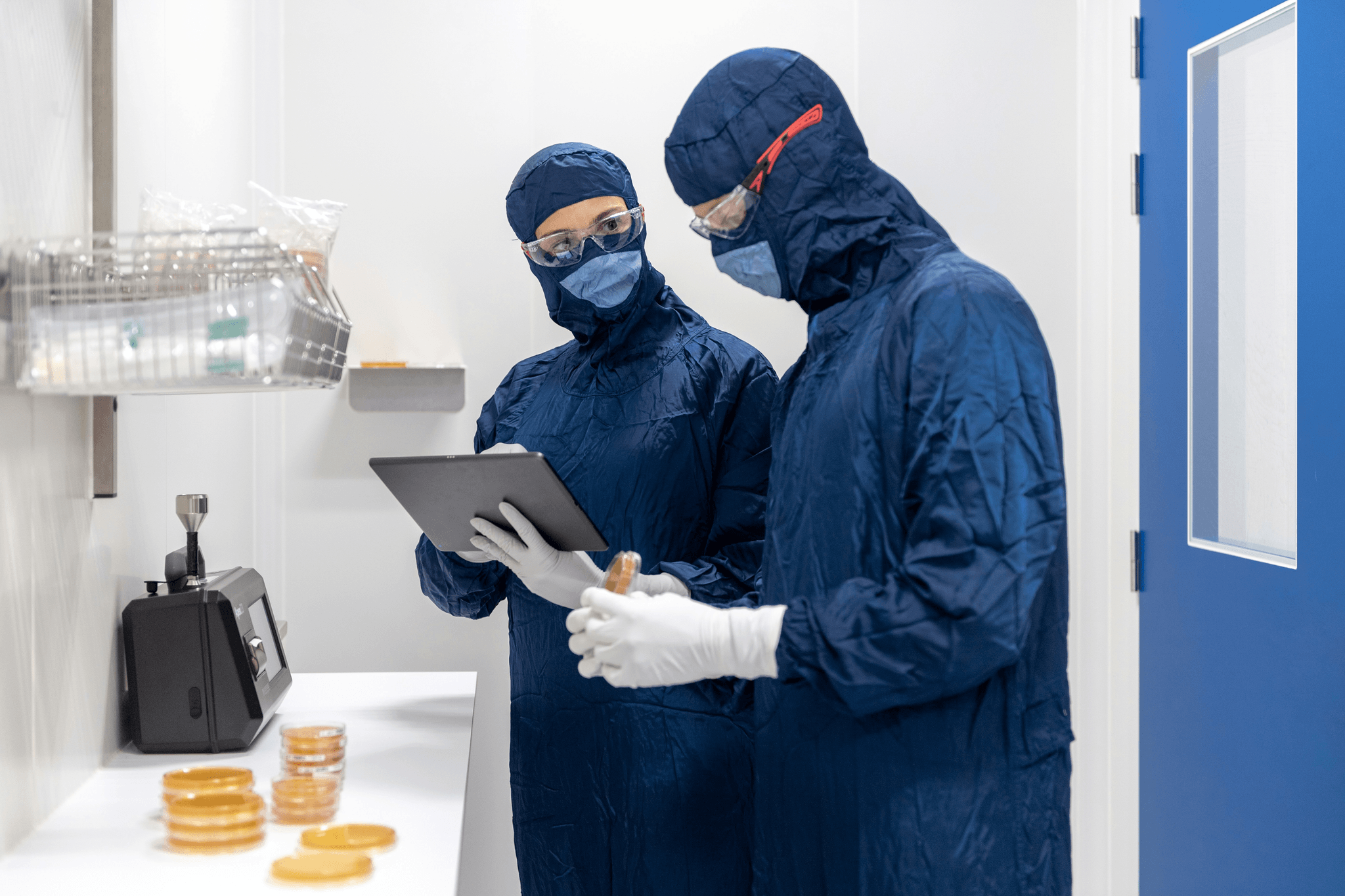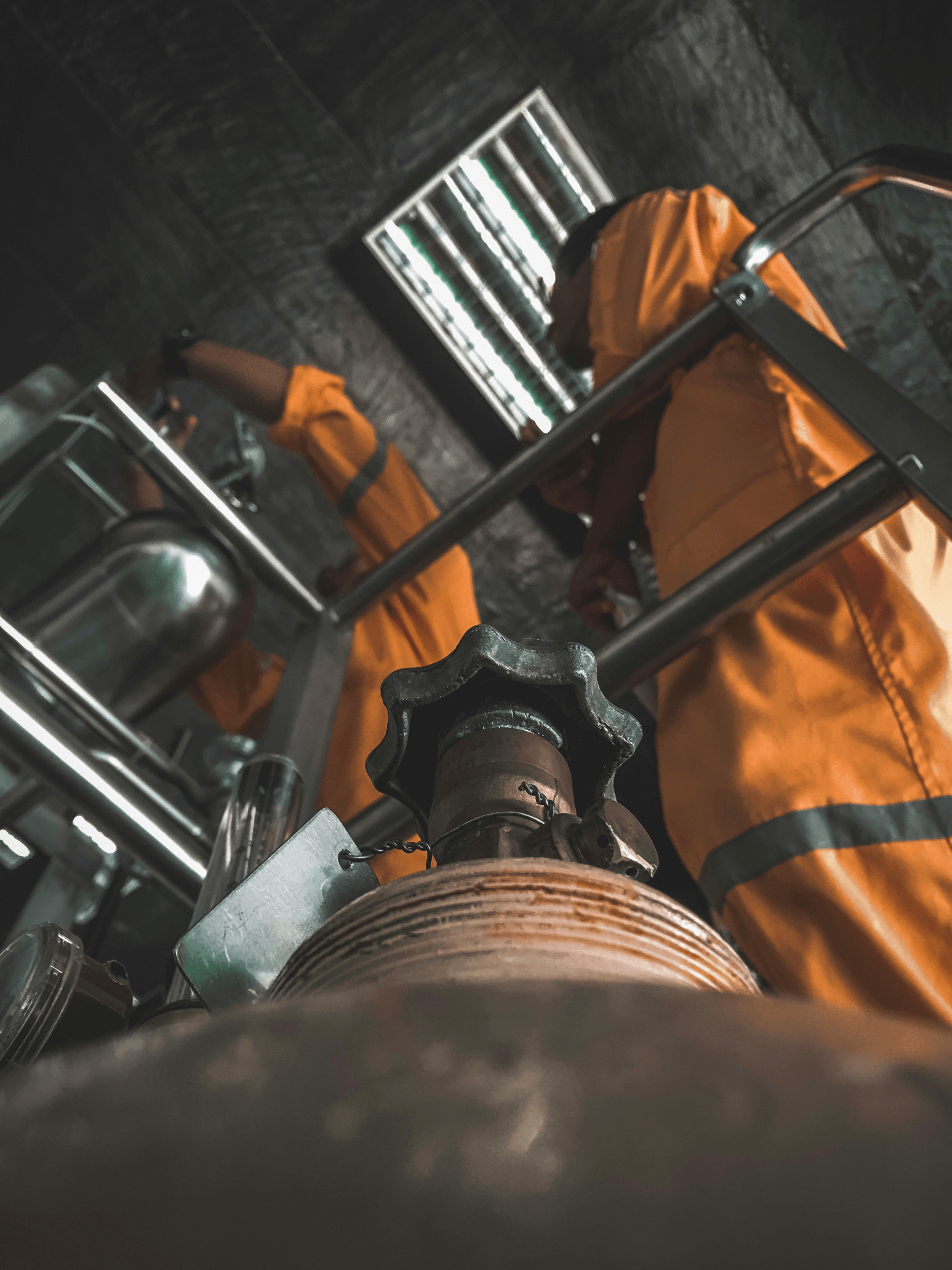Introduction
In today’s fast-paced industrial world, the safety of workers hinges significantly on the quality and reliability of Personal Protective Equipment (PPE). As businesses strive to protect their workforce, understanding the importance of verification becomes paramount. This involves not just selecting a supplier but ensuring that they meet rigorous standards through effective supplier auditing.
Understanding the Importance of Verification
Verification is the linchpin in ensuring that Personal Protective Equipment suppliers provide high-quality products that meet safety regulations. It’s not merely about checking boxes; it’s about establishing trust and accountability in a supply chain that can directly impact worker safety. A thorough supplier audit can illuminate potential risks and confirm compliance with industry standards, safeguarding both employees and employers alike.
Risks of Unverified Personal Protective Equipment Suppliers
Engaging with unverified PPE suppliers can expose companies to significant risks, including subpar equipment that may fail during critical moments. Such lapses can lead to workplace accidents, legal liabilities, and tarnished reputations—costs no business can afford to overlook. By conducting regular supplier audits and utilizing a comprehensive supplier audit checklist, organizations can mitigate these dangers effectively.
Key Elements of a Supplier Audit
A successful supplier audit encompasses several key elements designed to assess compliance and quality assurance thoroughly. From evaluating production processes to reviewing documentation and certifications, each aspect plays a crucial role in verifying a supplier’s reliability. Additionally, employing third-party inspection companies adds another layer of scrutiny, ensuring an objective assessment that reinforces confidence in chosen Personal Protective Equipment suppliers.
The Role of Supplier Auditing

Supplier auditing is a crucial process that ensures the integrity and reliability of Personal Protective Equipment Suppliers. By systematically evaluating suppliers, organizations can identify potential risks and ensure compliance with safety standards. This proactive approach not only safeguards the quality of products but also enhances overall operational efficiency.
What is Supplier Auditing
Supplier auditing refers to the systematic examination of a supplier's processes, practices, and products to verify their adherence to specified requirements. This includes evaluating quality control measures, safety protocols, and compliance with industry standards relevant to Personal Protective Equipment Suppliers. Essentially, it's like giving your suppliers a thorough check-up to ensure they’re in tip-top shape.
Benefits of Regular Supplier Audits
Regular supplier audits offer numerous benefits that extend beyond mere compliance checks. Firstly, they help in identifying areas for improvement within your supply chain, ensuring that Personal Protective Equipment Suppliers meet evolving safety regulations and quality expectations. Furthermore, consistent audits foster stronger relationships with suppliers by promoting transparency and accountability—because who doesn’t appreciate a little honesty in business?
How to Conduct a Supplier Audit
Conducting an effective supplier audit requires careful planning and execution using a well-structured supplier audit checklist. Start by defining the scope of the audit—what specific aspects will you evaluate? Then gather relevant documentation from your suppliers, including certifications and previous inspection reports, before scheduling on-site visits or utilizing third-party inspection companies for an unbiased evaluation.
Creating an Effective Supplier Audit Checklist

Essential Items for Your Checklist
An effective supplier audit checklist should encompass several essential items that cover various aspects of the supplier's operations. Start with verifying their certifications, as these documents prove compliance with industry standards and regulations relevant to Personal Protective Equipment Suppliers. Additionally, include items related to production capabilities, quality control measures, and supply chain management practices to assess overall reliability.
Don't forget to examine the supplier's financial stability; after all, a financially sound partner is more likely to deliver consistently over time. Furthermore, consider including questions about their workforce training programs since well-trained employees are crucial for maintaining high-quality production standards. Lastly, ensure that you assess their commitment to sustainability practices; responsible sourcing is increasingly important in today’s market.
Specific Criteria for PPE Suppliers
When evaluating Personal Protective Equipment Suppliers specifically, your checklist should reflect criteria unique to this sector. Begin by assessing the types of PPE they manufacture—ensure that they meet the necessary safety ratings and comply with relevant regulations like OSHA or ANSI standards. Additionally, inquire about their material sourcing; it's vital that they use materials known for durability and effectiveness in protecting workers.
Next on the list should be an evaluation of their testing processes; do they conduct regular tests on their products? A reliable PPE supplier will have rigorous testing protocols in place to ensure product integrity before reaching customers. Finally, check if they have any history of recalls or compliance issues—red flags here could indicate potential risks down the line.
Utilizing Your Checklist for Quality Assurance
Once you've created your supplier audit checklist tailored specifically for Personal Protective Equipment Suppliers, it's time to put it into action effectively. Use this tool during initial audits as well as ongoing evaluations; consistency is key in supplier auditing! Regularly revisiting this checklist ensures that suppliers maintain compliance over time while also adapting to any changes in regulations or market demands.
Moreover, don’t treat this checklist merely as a one-time formality; instead, leverage it as part of an ongoing quality assurance strategy within your organization. Incorporate feedback from previous audits into future iterations of your checklist—this continuous improvement approach can help streamline processes further while enhancing relationships with verified suppliers over time. Remember: a thorough audit isn't just about ticking boxes; it’s about fostering trust and accountability between you and your suppliers!
Third-Party Inspection Companies Explained

Navigating the world of Personal Protective Equipment Suppliers can be tricky, especially when it comes to ensuring quality and compliance. That's where third-party inspection companies come into play. These organizations serve as impartial evaluators, providing an essential layer of verification that can help businesses avoid the pitfalls associated with unverified suppliers.
What Is a Third-Party Inspection Company
A third-party inspection company is an independent entity that conducts assessments and evaluations on behalf of clients to ensure that products meet specified standards and regulations. In the realm of Personal Protective Equipment Suppliers, these companies focus on verifying compliance with safety standards, material quality, and manufacturing processes. By utilizing a third-party inspection company, businesses can gain peace of mind knowing that their supplier audit process is thorough and objective.
Top Companies to Consider: China Inspection Pro
When it comes to selecting a reliable third-party inspection company, China Inspection Pro stands out as a top contender in the field. Known for its comprehensive services tailored specifically for Personal Protective Equipment Suppliers, this company offers everything from factory audits to product inspections. Their expertise in supplier auditing ensures that clients receive detailed reports and actionable insights based on their rigorous supplier audit checklist.
The Value of a Third-Party Inspection
Engaging a third-party inspection company brings numerous benefits to the table, particularly in enhancing quality assurance measures for Personal Protective Equipment Suppliers. First off, these inspections provide an unbiased evaluation that can uncover potential issues before they escalate into costly problems down the line. Furthermore, regular audits by a 3rd party inspection firm can help maintain ongoing compliance with industry standards while fostering trust between buyers and suppliers.
Signs of a Reliable Supplier
When it comes to sourcing Personal Protective Equipment (PPE), identifying reliable suppliers is paramount. A dependable supplier not only ensures the quality of the equipment but also contributes to overall workplace safety. Here, we explore key indicators that can help you recognize trustworthy PPE suppliers.
Certifications and Compliance Standards
One of the most telling signs of a reliable supplier is their adherence to certifications and compliance standards relevant to Personal Protective Equipment. These certifications, such as ISO or ANSI, signify that the supplier meets specific quality and safety benchmarks, which are crucial for effective PPE performance. Additionally, compliance with local regulations indicates a commitment to ethical practices and product reliability, making it an essential item on your supplier audit checklist.
To ensure you're working with reputable Personal Protective Equipment suppliers, always verify their certifications before proceeding with any contracts. If they lack proper documentation or seem hesitant to provide it, consider this a red flag in your supplier auditing process. Remember, a well-certified supplier is often more invested in maintaining high-quality standards and less likely to cut corners.
Customer Reviews and Reputation
The reputation of a supplier can often be gauged through customer reviews and testimonials. Positive feedback from previous clients indicates that the PPE provided meets expectations regarding quality and service—essential factors when conducting your supplier audit. Conversely, negative reviews should not be overlooked; they can provide valuable insights into potential issues you might face down the line.
Checking online platforms for customer experiences can help paint a clearer picture of what you might expect from your chosen Personal Protective Equipment suppliers. Engaging directly with other businesses in your industry can also yield useful information about reputable suppliers worth considering during your auditing process. Ultimately, a strong reputation backed by satisfied customers often signifies reliability in both product quality and service delivery.
Transparency in Operations
Transparency is another critical indicator of a reliable PPE supplier's integrity and operational practices. Suppliers who openly share their manufacturing processes, sourcing methods, and supply chain logistics demonstrate confidence in their products' safety and efficacy—qualities you should prioritize during any supplier auditing endeavor. This openness allows you to assess whether they align with your company's values regarding ethical sourcing and sustainability.
Additionally, transparent communication about pricing structures helps avoid unexpected costs later on while establishing trust between both parties involved in the procurement process. When assessing potential Personal Protective Equipment suppliers through your checklist or during audits, look for those willing to disclose detailed information about their operations without hesitation or ambiguity. After all, if they're hiding something from you now, what else could be lurking beneath the surface?
Maintaining Relationships with Verified Suppliers

Building and maintaining strong relationships with verified Personal Protective Equipment suppliers is crucial for ensuring consistent quality and safety in your operations. A proactive approach to supplier management not only fosters trust but also enhances collaboration, which can lead to better outcomes for both parties. By implementing regular communication, setting performance metrics, and embracing continuous improvement practices, you can ensure that your supplier relationships remain robust and effective.
Regular Communication and Follow-Ups
Regular communication with your Personal Protective Equipment suppliers is essential for keeping the lines of dialogue open. This means engaging in frequent check-ins to discuss any potential issues or changes in requirements, as well as providing feedback on their products and services. Additionally, follow-ups after a supplier audit or third-party inspection can help reinforce expectations and ensure that any identified areas for improvement are addressed promptly.
Establishing a routine schedule for these communications can make it easier to manage relationships effectively. Whether through emails, phone calls, or face-to-face meetings, keeping the conversation flowing will allow both parties to stay aligned on goals and expectations. Remember that a solid relationship with your suppliers can lead to improved service levels and even better pricing down the line.
Setting Performance Metrics
Setting clear performance metrics is a vital step in maintaining reliable partnerships with Personal Protective Equipment suppliers. These metrics should be specific, measurable, achievable, relevant, and time-bound (SMART), allowing you to evaluate their performance objectively over time. Regularly reviewing these metrics during supplier audits ensures accountability while also providing opportunities for constructive feedback.
When establishing these performance indicators, consider aspects such as quality control results from your supplier audit checklist or turnaround times on orders. By tracking these metrics consistently, you can identify trends in supplier performance that may require further attention or adjustment in strategy. This data-driven approach not only strengthens accountability but also cultivates a culture of continuous improvement among your suppliers.
Continuous Improvement Practices
Continuous improvement practices are essential for fostering long-term relationships with verified Personal Protective Equipment suppliers. Implementing initiatives such as joint training sessions or workshops allows both parties to learn from each other while enhancing product quality and service delivery standards together. Utilizing insights gained from third-party inspection company reports can provide valuable benchmarks for identifying areas where improvements are needed.
Encouraging open dialogue about challenges faced by either party promotes an atmosphere of collaboration rather than competition—leading to innovative solutions that benefit everyone involved! Moreover, recognizing achievements—no matter how small—can motivate suppliers to strive for excellence continually while reinforcing loyalty between partners over time.
In conclusion, nurturing relationships with verified suppliers requires ongoing effort through regular communication channels like check-ins after audits; setting clear performance metrics based on objective criteria; embracing opportunities for continuous improvement—all pivotal elements ensuring safety standards remain high across all operations involving Personal Protective Equipment!
Conclusion
In the world of Personal Protective Equipment (PPE) suppliers, verification is not just a checkbox; it’s a lifeline. Ensuring that your suppliers are thoroughly audited and compliant with safety standards significantly reduces risks associated with unverified products. Ultimately, verification is the cornerstone of maintaining a safe working environment for all involved.
Why Verification Is Key to Safety
Verification acts as the first line of defense against subpar or unsafe PPE products entering your supply chain. When you conduct regular supplier audits and utilize a detailed supplier audit checklist, you can identify potential issues before they escalate into serious safety hazards. This proactive approach ensures that only reliable Personal Protective Equipment Suppliers are part of your network, thus safeguarding your workforce.
Long-Term Benefits of Working with Verified Suppliers
Partnering with verified suppliers offers numerous long-term advantages that extend beyond mere compliance. Reliable Personal Protective Equipment Suppliers tend to deliver consistent quality, which translates into fewer workplace incidents and lower liability costs over time. Moreover, these relationships often foster innovation and efficiency as both parties work together towards continuous improvement in their processes.
Steps to Take for Ongoing Assurance
To maintain ongoing assurance in your supply chain, it's essential to establish regular communication channels with your verified suppliers. Implementing performance metrics will help you monitor their adherence to safety standards consistently while also utilizing third-party inspection companies for an unbiased perspective on compliance levels. By incorporating these practices into your routine supplier auditing process, you'll ensure that safety remains paramount while building resilient partnerships.
